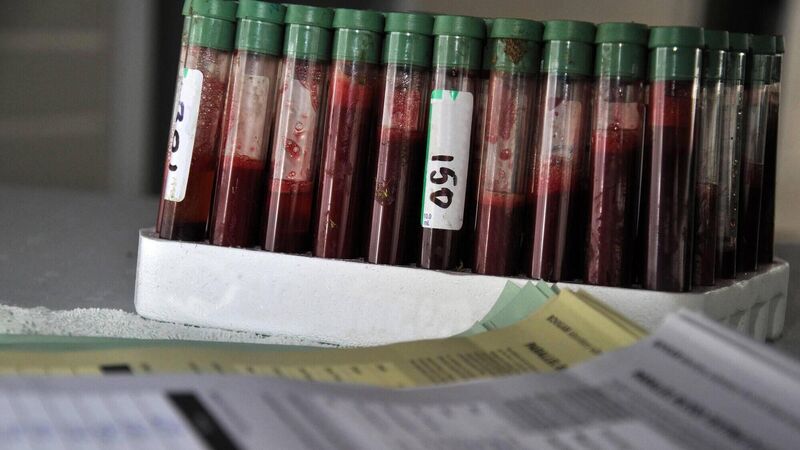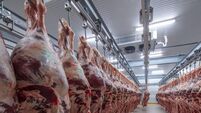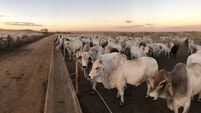Herd incidence of TB increasing while clinical cases drop

'If we were to look at the 12-month period going back to last April 2023, we’ve had about 30,000 reactors. That’s 6,000 up.'
Clinical cases of bovine TB have become less frequent, said superintending veterinary inspector David Quinn, in a recent Teagasc podcast. He explained why no lesions are detected in many reactors at factories.
Cases are detected at an earlier stage of infection. “Because of that, you tend not to see lesions in a lot of the animals. About 30% of the animals that go into the factory, 30% of the reactors, will be lesioned. That’s not to say that the other 70% are not infected, it’s just that the lesions are microscopic, so you can’t see them with the naked eye.
"It’s about the stage of the infection at which you’re picking them up, the more advanced the infection, the more lesions that you’ll see,” Mr Quinn said. “The skin test is a very good screening test. The chances of taking out an animal that’s not really infected is really low, it’s one in 5,000.”
Mr Quinn explained how the TB test works. “It’s a comparative test. What you do is clip the neck of the cattle on two different sites. In the top, you’re injecting a little drop of avian tuberculin, and in the bottom you’re injecting bovine tuberculin.
"You come back 72 hours later and what’s happened in that interim 72-hour period is that you get an immune response to those tuberculins that you injected into those sites and you measure the increases.” he said.
When the bovine site reaction exceeds the avian site reaction by 4mm or greater, the animal is declared a standard reactor.
“The sensitivity of the test is about 80%. It’s a very good test in terms of a herd screening test, but it does miss individual animals. The benefit of the test is that it’s easy to do, you’re not involved in complicated laboratory procedures, and you’ve a fairly quick turnaround time”.
Nevertheless, Mycobacterium bovis can infect an animal with TB, and remain latent and undetected by the test.
Vets say up to about six weeks after an animal becomes infected, the immune response will not be adequate to respond to the test.
Calving can also inhibit clear test results. “The animal’s going through a big change in terms of hormones. It’s having to calve, it’s stressed, sometimes it’s being introduced into new groups of animals, and they’re having to produce milk as well.
"All of that is physiological stress, and that can reduce the immune response. These are the kinds of animals that you don’t pick up in the test,” Mr Quinn said.
“Obviously, if you miss those animals and they’re left behind in the herd, that’s the risk then, that they spread, they’re shedding M bovis into the environment and it’s being picked up by other animals.”
That is why a follow-up test is needed 60 days after reactors, and why two clear tests are required.
“If you have an infection circulating in the herd, you’re not going to pick up those early infected animals, so you need to allow time to elapse so that they will actually be detected,” Mr Quinn explained.
“People can fall into the trap of thinking ‘I’ve two clear tests, I’m free of TB’.
"You’ve satisfied the criteria to have your herd de-restricted, but you’re not necessarily free of TB. There could be animals that have been missed by the test.
"That’s why in the three years after your two clear tests, you’re at a higher risk of breaking down than if you go beyond that three-year period”.
“There are different types of herd breakdown,” Mr Quinn said. “The issue is when you get three or more, or, depending on the size of the herd, 10% of the herd infected. It’s important to get in there, because sometimes what you’re picking up in the skin test is the tip of the iceberg, and the longer this remains in your herd, the harder it will be to root it out.
“Sometimes, farmers can be reluctant because they’re afraid of extra animals being removed, but if you get in early and try to take out infected animals and pick them up with the skin test, or the gamma Interferon test will actually pick them up at an earlier stage of the infection than the skin test, so it’s important to get those animals out, otherwise you can wind up in a kind of recurring cycle, test after test after test.”
In a lot of cases where there is an ongoing cycle of infection with TB on a farm, residual infection has set in. “It’s become embedded in the herd,” Mr Quinn said.
Residual infection means infected animals that test negative. Older cows are often the source. The animal may be passing the skin and blood tests, but can be shedding infectious droplets which infect other animals.
“That’s when you have to think about whether you need to remove all the animals. When you get into scenarios where 30% of the herd is infected, that has to become a consideration”.
Why, after 70 years, has Ireland not advanced further in eradicating bovine TB?
“As far as I know, there are only two countries that have eradicated it, that’s Japan and Australia,” Mr Quinn said.
“In the period preceding expansion of the dairy herd, we were at around 3.7% herd incidence, and it was on a downward trajectory. The expansion of the dairy herd has acted as a kind of disrupter here.
"You had a lot of movement of animals all around the country as people either expanded herds, or you had guys getting into dairying for the first time, so you had a lot of movement of animals.
“I’d be optimistic that we might be about to turn a corner on it,” he added.
But TB incidence is increasing. “If we were to look at the 12-month period going back to last April 2023, we’ve had about 30,000 reactors. That’s 6,000 up.
Herd incidence has also increased. "It’s been slowly creeping up the last two years and we’re at about 5% now of the total herds in the country restricted," Mr Quinn said.
The latest figures show Cork North had the fourth highest herd incidence at 8.16%, after Wicklow West with 19.83%, Wicklow East with 11.61%, and Dublin with 11.25%.
The incidence is 6.87% in Cork South, 6.48% in Tipperary North, 5.76% in Tipperary South, 4.4% in Kerry, 4.18% in Limerick, 4.03% in Waterford, and 3.3% in Clare.
Under EU trade laws, cattle must complete a 30-day residency period on a holding, and pass a TB test, prior to export.
Annually, Ireland exports large numbers of live cattle to other EU countries. To protect this trade and the countries to which we export, it is necessary to have a TB eradication programme.
“The reality is that if you didn’t have this, you would lose the access to all those markets that we have,” Mr Quinn explained.
He confirmed there was irrefutable evidence of a link between badgers and the spread of bovine TB.
“We began culling badgers, but the idea of continuing to cull them ad infinitum is not really sustainable,” he said. Badgers are vital to the ecosystem, he explained.
Badger vaccination has proved as effective as culling. “We still have vaccination and cull running side by side,” Mr Quinn said.
“For the vaccination to work, you need to have low levels of bovine TB and you need to have a reduced badger density in the area that you’re going to vaccinate in”.
Vaccination protects the badgers and prevents them from spreading infection to cattle or to other badgers.











